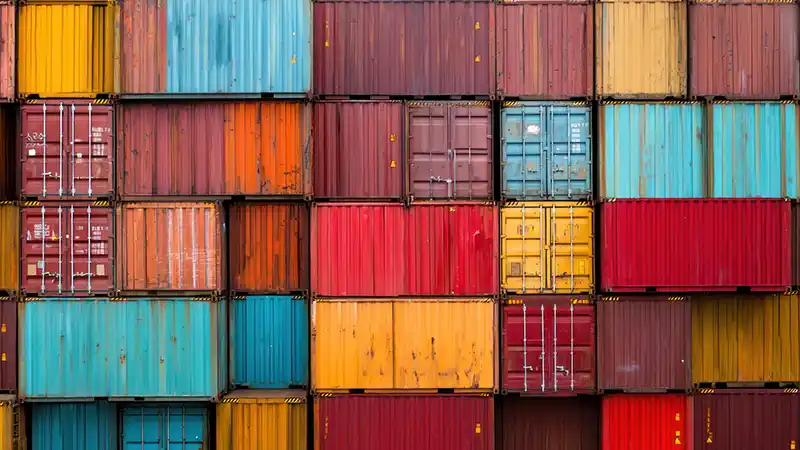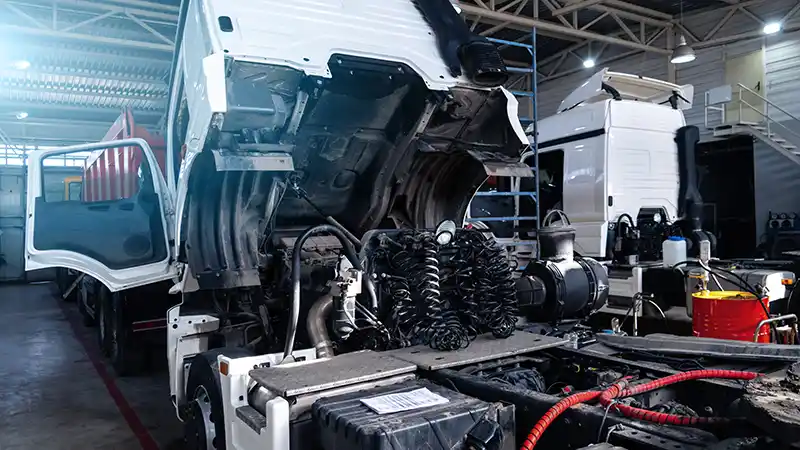In 2025, the U.S. trucking industry finds itself at the volatile crossroads of global politics and domestic logistics. A new wave of tariffs and trade policy changes has swept across the nation, sending shockwaves through freight networks and upending long-established shipping routes. For carriers, brokers, and shippers alike, the old playbook no longer works. As the federal government imposes aggressive new duties on imports and trading partners retaliate, every link in the supply chain is being tested. Costs are rising, routes are shifting, and the pressure to adapt has never been greater.
This article unpacks the real-world impact of these new tariffs. We’ll explore how port congestion, cross-border slowdowns, and cost inflation are affecting carriers, what shippers and logistics partners are doing to reconfigure their networks, and which strategies are helping proactive fleets thrive amid the uncertainty.
The New Tariff Era: What Changed in 2025?
The latest round of tariffs stems from a complex mix of economic, political, and security considerations. In 2025, the U.S. government enacted sweeping new duties targeting imports from China, Mexico, and the European Union. The stated goals: correct trade imbalances, protect domestic industries, and strengthen national security.
The new tariffs are broad and deep. Chinese electronics and machinery face a 25% duty. European vehicles and parts are hit with 10–20% tariffs. Mexican agricultural exports and finished goods are subject to new levies. In response, China, the EU, and Mexico have imposed retaliatory tariffs on U.S. exports, hitting everything from soybeans to aircraft parts.
The result is a dramatic reshuffling of global trade flows. Importers and exporters are racing to find new suppliers, reroute shipments, and minimize their exposure to duties. For U.S. carriers, the consequences are immediate and far-reaching.
Disrupted Freight Routes: The New Geography of Trade
Port Diversions and Congestion
With tariffs targeting specific countries and products, shippers are rerouting cargo to avoid duties and keep costs down. West Coast ports, traditionally the main entry point for Asian imports, are seeing declining volumes. Instead, container traffic is surging at East Coast and Gulf ports, Savannah, Charleston, and Houston in particular, as shippers seek alternatives to the tariffed West Coast lanes.
Cross-border gateways are also under stress. Laredo and El Paso are experiencing record volumes as goods are trucked from Mexican factories into Texas. The Canadian ports of Vancouver and Prince Rupert are handling more U.S.-bound freight, with trucks and trains moving goods south after customs clearance. All this has created new congestion points, with longer wait times and bottlenecks at customs and inspection facilities.
Cross-Border Delays and Compliance
Tariffs come with a mountain of paperwork. Customs declarations, certificates of origin, and duty calculations are now part of daily life for carriers and brokers. Compliance checks are more frequent and thorough, leading to longer border waits and increased administrative headaches for drivers and dispatchers. For time-sensitive or perishable goods, these delays can be costly.
Modal Shifts and Logistics Innovation
The new tariff regime has triggered a wave of experimentation in freight modes. Some shippers are shifting high-value goods from ocean to air, despite higher costs, to avoid delays and minimize duty exposure. Others are consolidating shipments and moving more freight by rail, especially on long-haul routes, to spread costs and reduce the number of customs transactions. Intermodal carriers and drayage specialists are seeing new business as shippers look for creative ways to navigate the changing landscape.
The Cost Squeeze: Inflation, Margins, and the New Normal
Tariffs are, at their core, a tax on trade. For carriers, the impact is felt in several ways.
Higher Operating Costs
Many truck parts, maintenance supplies, and even basic equipment are imported. New duties have driven up the price of everything from tires and electronics to chassis and trailers. Fleets are spending more to maintain and upgrade their assets, and those costs are hard to pass on in a competitive market.
Fuel and insurance costs are also rising. As the value of cargo increases due to tariffs, insurance premiums climb. The risk of delays and spoilage adds further pressure.
Rate Pressure and Margin Squeeze
Shippers, faced with higher landed costs, are negotiating harder on freight rates. Some are consolidating shipments, extending payment terms, or shifting to lower-cost carriers. For many fleets, this means thinner margins and more competition for every load.
Administrative Overhead
Compliance with new trade rules requires investment in staff, training, and technology. Carriers must stay on top of evolving regulations, paperwork, and audits, or risk costly penalties. For small fleets, the administrative burden can be overwhelming.
Winners and Losers: Who’s Thriving, Who’s Struggling?
Winners
Carriers with deep cross-border expertise are in high demand. Fleets that understand customs, compliance, and alternative routes can command premium rates and win new business. Intermodal and drayage specialists are thriving as shippers shift modes and look for partners who can navigate the complexity.
Domestic manufacturers and regional carriers are also benefiting. As some companies “reshore” production to avoid tariffs, demand for local and regional trucking is on the rise.
Losers
Small fleets with limited resources are struggling to keep up with the cost and complexity of compliance. Carriers dependent on tariffed imports or exports—especially in automotive, electronics, or agriculture—are seeing volumes drop and rates stagnate. West Coast ports and traditional trade corridors are losing traffic and revenue as shippers seek alternatives.
Real-World Stories: Adaptation in Action
Consider the case of a major electronics importer that, facing 25% tariffs on Chinese goods, shifted its supply chain to route products through Mexican assembly plants. Finished goods are now trucked into Texas, bypassing some duties but adding complexity and risk. Carriers serving Laredo report higher volumes, but also longer border delays and rising insurance costs as the value of freight increases.
A Midwest auto parts carrier, once reliant on imports from Asia, saw volumes drop by 30% after new tariffs made those goods less competitive. The carrier pivoted to serving local manufacturers, but rates are lower and competition fierce. Meanwhile, intermodal carriers in the Southeast are expanding capacity and hiring drivers as East Coast ports gain volume and shippers pay premiums for reliability and compliance expertise.
How Fleets Are Navigating the New Landscape
Diversification and Flexibility
Smart carriers are diversifying their customer and commodity mix, moving away from tariff-exposed goods and focusing on domestic, non-dutiable freight. Some are expanding into new regions or sectors, while others are building expertise in cross-border and compliance-intensive markets.
Investment in Compliance and Technology
Fleets are hiring customs brokers, training staff, and adopting digital tools for paperwork, tracking, and duty calculation. Automated compliance systems help reduce errors and speed up border crossings. Technology is becoming a competitive differentiator.
Strategic Partnerships
Collaboration is key. Carriers are forming alliances with freight forwarders, customs brokers, and third-party logistics providers to offer end-to-end solutions for shippers. These partnerships enable fleets to share risk, pool resources, and provide more value to customers.
Scenario Planning and Agility
The most resilient fleets are running “what if” scenarios for different tariff regimes, trade deals, and geopolitical shocks. They’re ready to pivot routes, modes, and customer focus as the landscape evolves.
Policy and Industry Advocacy
Industry associations are lobbying for clearer rules, faster customs processes, and relief for carriers hit hardest by tariffs. Investment in infrastructure and technology at ports and border crossings is a top priority, as congestion and delays threaten to undermine the benefits of trade.
Looking Forward: The Future of Trade and Trucking
Tariffs and trade policy will likely remain volatile for the foreseeable future. Fleets that can adapt quickly, manage costs, and offer value-added services will not just survive, but thrive. Those that cling to old networks and practices risk being left behind.
Key trends to watch include ongoing trade negotiations, investments in U.S. manufacturing and domestic supply chains, advances in digital customs and compliance technology, and shifts in global shipping patterns.
Conclusion
New tariffs are disrupting U.S. freight in profound ways, changing routes, raising costs, and forcing carriers to rethink their strategies. The winners will be those who embrace change, invest in compliance and technology, and build strong, flexible partnerships across the supply chain. In a world where trade policy can change overnight, adaptability is the ultimate competitive advantage.












